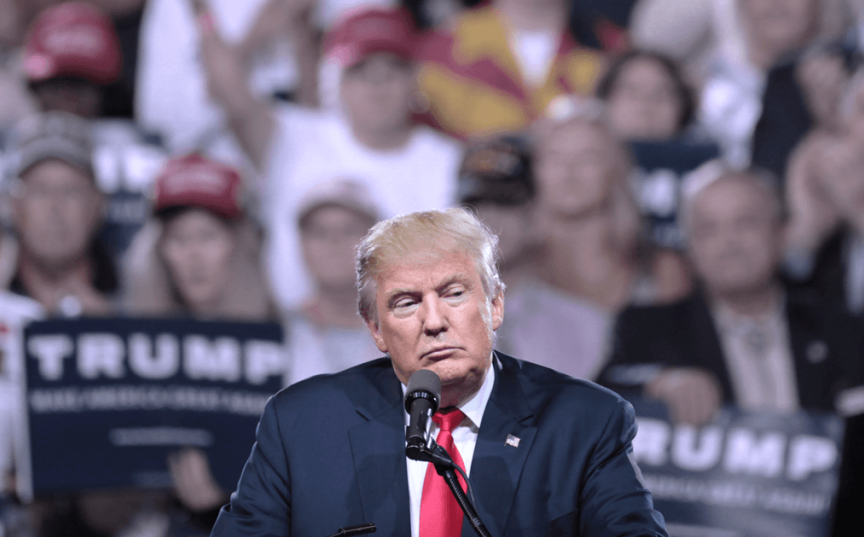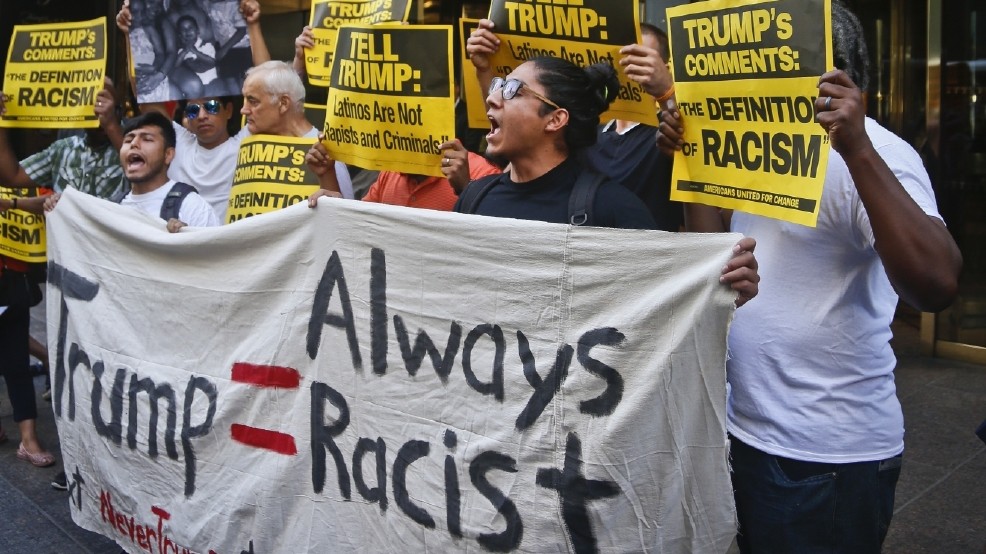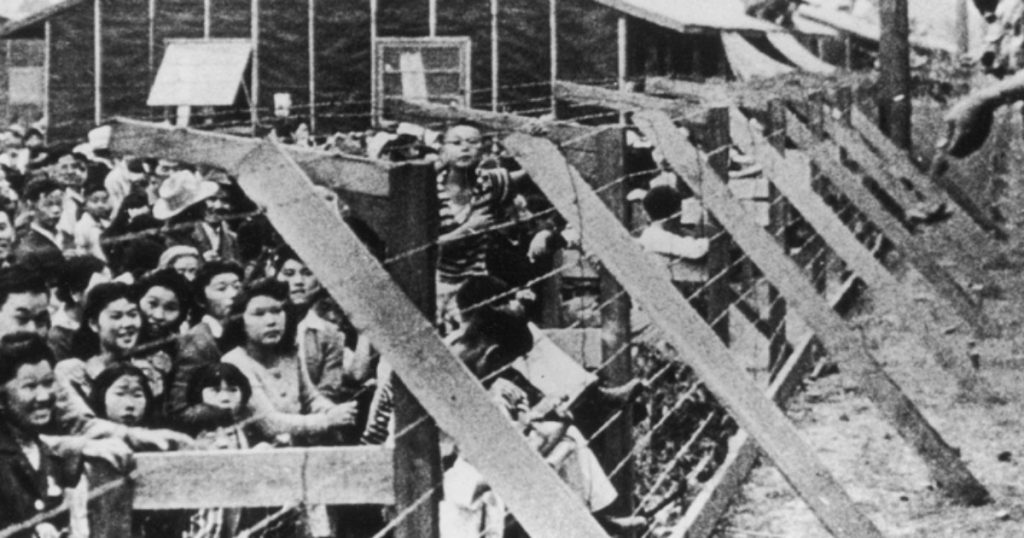AP photo
By
Rupen Savoulian
There are many analyses of the incoming Trump administration, examining the reasons for his electoral victory, the racism and Islamophobia that he deployed to win votes, his populist appeals to the American working class, the emboldened position of the alternative right, and the ultra-rightist nature of his incoming cabinet. It is no exaggeration to state, for instance, that his chief-of-staff, the man Trump turns to first for political advice, is an outright fascist.
It is not difficult to ascertain that the leading personnel of the Trump regime, composed of billionaires, ex-generals and ultra-rightist psychopaths, are going to make life harder for the American working class – and by that we mean people of all racial and ethnic backgrounds. For instance, Trump has selected Jeff Sessions to be the new attorney general.
Who is Jeff Sessions? A lawyer with a lifelong background in opposing African American civil rights, a veteran career racist with deep sympathies for the Confederate South. It is interesting to note that Sessions opposed the removal of Confederate flags and symbols from government buildings, having been named after a Confederate slave-owning general who fought for the defence of segregation and slavery. It is difficult to ascertain how Sessions, on his way to becoming the top lawmaker in the land, will defend the civil rights of all Americans.
You may easily find the reams of commentary written about the Trump administration, and its political character. There is no question that Trump himself, America’s version of former Italian Prime Minister Silvio Berlusconi, represents the nakedly aggressive, obnoxious character of American capitalist politics. Trump, a billionaire businessman with a history of bankruptcy and dubious business dealings, began as a ‘joke’ candidate, much like Berlusconi.
Similarly to the latter, Trump has provided a lightning rod for ultra-rightist, fascistic elements and white nationalists to aggregate, now going by the name of Alternative Right. In line with Berlusconi, Trump has proven himself to be a serial sex pest, boasting about his sexual conquests, advocating a puerile machismo that is symptomatic of his misogynistic view of the world.
There are many aspects of the Trump administration to analyse, however, let us focus on one – an issue that has widespread implications for the maintenance of democratic rights and civil liberties in the United States. Trump, back in December 2015 while on the campaign trail, made the announcement that his government would ban Muslim immigration on the grounds of protecting America’s national security.
His proposal, made in the heat of the electoral race, attracted widespread and heavy condemnation – and that was perfectly sound. His vulgar and semi-fascistic rhetoric exposed the iron fist beneath the velvet glove, and exposed the continuing rightward evolution of the American political system. Democratic and civil liberties are being undermined, and Trump’s proposal was further proof that American democracy is in serious decline.
Anti Trump protesters demonstrate outside a meeting between Donald Trump and minority Republicans at Trump Tower – Photo-Bebeto Matthews/AP
Internment – as American as apple pie
The chorus of condemnation, issued by major political and media figures, largely followed the line that Trump’s policy proposal was ‘unAmerican’ and a direct violation of America’s democratic traditions. This line is actually quite fictitious – Trump’s position is extreme, but well within the mainstream of American political life, located in the discussions and philosophy of the American Republican party. Targeting ethnic and racial minorities for profiling, registering them, and interning them in detention centres is a practice that has a long tradition in American history. Let us listen to the words of Sarah Aziz, associate professor of law at Texas A&M University:
Trump’s desire to keep Muslims out of America goes back two centuries. The Naturalization Act of 1790 barred Muslims from citizenship because only white people were eligible. Muslims were viewed as either black slaves, who were not considered full persons, or Turks and Arabs who were deemed enemies of white Christianity – a hallmark of American citizenship.
Even after the end of slavery, Muslims continued to be excluded. Immigration laws in the late 19th and early 20th centuries sought to exclude Chinese, Japanese and other Asians. Whiteness was still the prerequisite for naturalized citizenship. Islam was associated with Asiatic cultures deemed antithetical to American values.
What makes the contemporary period different is the exclusive focus on Islam and Muslims as the primary threat to American life – as opposed to Muslims being caught up in anti-black or anti-Asian prejudice. Mirroring the historic racist rhetoric against the Chinese and Japanese, a critical mass of Americans view Muslims as disloyal, suspicious, dangerous and possessing a culture deemed irreconcilable with American norms.
Carl Higbie, a Trump advisor, made positive reference in an interview to the internment of Japanese Americans during World War Two, and spoke of it as a legitimate measure when faced with wartime conditions. He went on to suggest that today, in these times of Islamic-inspired aggression, a registry of Muslim Americans is needed to keep track of America’s enemies. Higbie’s comments correspond to Trump’s own statements about this issue in the past. His comments were strongly denounced by civil rights activists, Asian American groups, Islamic American organisations and various politicians. For instance:
Representative Mark Takano, a Japanese-American and Democrat from California whose parents and grandparents were imprisoned during World War II, said in a statement on Thursday that the comments reflected “an alarming resurgence of racism and xenophobia in our political discourse.” He called on Mr. Trump to denounce them.
It is interesting that the spectre of Japanese American internment has been raised at this time, considering that current Japanese Prime Minister, Shinzo Abe, visited Pearl Harbour at the end of December 2016. While not apologising for the World War Two attack, Abe expressed his regrets for the deaths and trauma caused, and wished to mend fences with the United States. In the wake of that attack, the US government issued orders to incarcerate 120,000 Japanese Americans in concentration camps, rationalised by the fear that they may become a hostile presence, or aid the official enemy in some way. This mass incarceration was implemented by presidential executive order 9066.
Why is this important? We should remember that while today’s Republicans and conservative politicians are positively referencing the precedent of Japanese American internment, it was New Deal Democrats and liberals who devised and enacted these measures. Extreme, but not outside of the mainstream…….
Internment of ethnic Japanese in America following Presidential Executive Order 9066 – CSL photo
In a moving and extensive account, Jessie Kindig, visiting scholar at the Center for the Study of Ethnicity and Race at Columbia University, wrote how the origins of the view that Japanese Americans are a hostile and alien influence predated World War Two and Pearl Harbour:
As early as 1936, during the Japanese imperial expansion into the Pacific, President Franklin Roosevelt had written to the military’s Joint Board chief advocating the “obvious thought” of creating a “special list” of Japanese citizens and non-citizens in Hawaii so they might be “placed in a concentration camp in the event of trouble.” Roosevelt’s suggestion flew in the face of more than a decade of government surveillance that saw little possibility of Japanese-American communities allying with imperial Japan. Regardless, the president’s fears were “obvious” to him because of a much longer history of racial exclusion that had made Asian people seem foreign to the United States.
The idea that Japanese Americans were a conglomerated, suspicious element within the body politic thus had a long history before World War II.
George Takei, Japanese American actor, author and activist best known for his long-running role on the Star Trek series, wrote of his experiences being interned in a detention camp with his parents:
Stop and consider these words. The internment was a dark chapter of American history, in which 120,000 people, including me and my family, lost our homes, our livelihoods, and our freedoms because we happened to look like the people who bombed Pearl Harbor. Higbie speaks of the internment in the abstract, as a “precedent” or a policy, ignoring the true human tragedy that occurred.
I was just a child of 5 when we were forced at gunpoint from our home and sent first to live in a horse stable at a local race track, a family of five crammed into a single smelly stall. It was a devastating blow to my parents, who had worked so hard to buy a house and raise a family in Los Angeles. After several weeks, they sent us much farther away, 1,000 miles to the east by rail car, the blinds of our train cars pulled for our own protection, they said. We disembarked in the fetid swamps of Arkansas at the Rohwer Relocation Center. Really, it was a prison: Armed guards looked down upon us from sentry towers; their guns pointed inward at us; searchlights lit pathways at night. We understood. We were not to leave.
The writers at Liberation News published a thoughtful article, back in February 2016, about the internment of Japanese Americans. They wrote of the history of anti-Asian racism, and its parallels with the current upsurge of anti-Arab racism and Islamophobia. They wrote that:
In the late 19th century, U.S. Congress decided to discourage Japanese immigration, prohibit naturalization of Japanese immigrants and curtail land ownership by Japanese. By 1924, the U.S. government banned virtually all immigration from Japan. Several states including California banned marriages between white people and people of Asian descent, only permitting the latter to marry other people of color.
As World War Two proceeded, and Japan began to expand its military conquests in Asia, the Roosevelt administration compiled a Custodian Detention Index (CDI), which was a list of potential ‘enemy aliens’ – basically, Japanese Americans who were considered a security risk. While the State Department confirmed in 1941 that there was no “Japanese problem’, racial profiling and exclusionary measured directed against the Japanese American community continued.
While these issues are of historical value, they have direct relevance for today. Not too long ago, Retired US General Wesley Clark, putative candidate for the Democrat party in 2004, suggested establishing internment camps for ‘radicalised Americans’. How exactly that radicalisation is to be defined, and how the authorities go about identifying a ‘radicalised’ person as opposed to a ‘moderate’, Clark did not elaborate.
Clark, a high-profile supporter of former Democrat Presidential candidate Hillary Clinton, reflects the thinking that is taking hold among official circles. While Trump was met with heavy condemnation when he suggested similar ideas, Clark’s comments were met with silence. Mass detention of political opponents has less to do with security, and more to do with tightening the grip of the US ruling class over the bulk of the population.
Former US Supreme Court Justice, the late Antonin Scalia, when discussing the mass internment of Japanese Americans during World War Two, made the following comment:
“[Y]ou are kidding yourself if you think the same thing will not happen again.”
He was talking to students at the University of Hawaii in February 2014 with regards to the Korematsu decision. The US Supreme Court, in 1944, decided that the mass internment of Japanese Americans was constitutional on the grounds of ‘military urgency’. The name of the decision was taken from the two Japanese Americans who launched a legal challenge to the mass incarceration – Fred Korematsu and Gordon Hirabayashi. Scalia stated that while the Korematsu decision was wrong, it was naive to think that mass detention could not happen again. While the American government did apologise for the Korematsu case in 1988, the toxic ideas that underpin it have resurfaced in a big way in the current political context of Islamophobia and the demonisation of the Islamic American community.
The response of the US ruling class to any modern-day challenges is to recycle the old, poisonous and discredited ideas from the darkest chapters of America’s history. Trumpism and its ideas are horrid, but they are not without precedent. Trumpism may be a monstrous formation, but it was incubated in the culture and practices of neoliberal capitalism. John Passant, former tax commissioner, lecturer and now PhD student, summed it up best when he described Trump’s victory as one of the morbid symptoms of neoliberalism. The doctrine of austerity and neoliberalism has not just given us morbid symptoms, but has successfully produced the monstrous toxic mix of Trumpism. Trump’s ideas may represent a break from the Obama-Clinton centrist project, but they are also a continuity of its most extreme permutation.





No Comments Yet!
You can be first to comment this post!